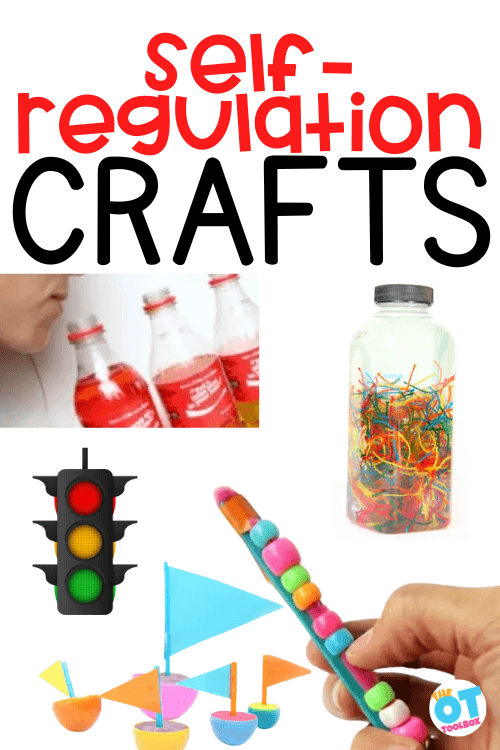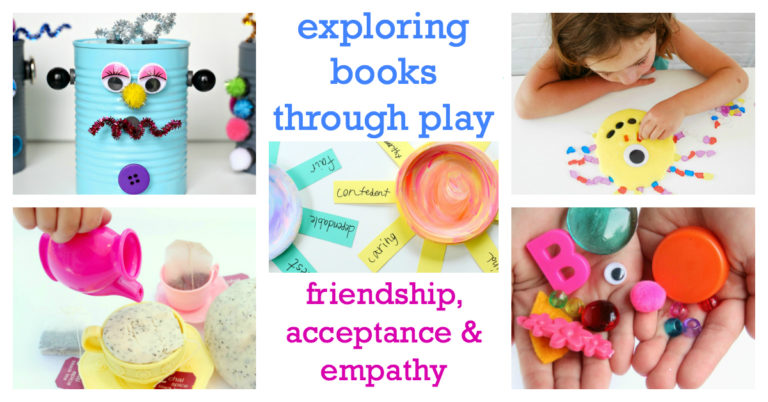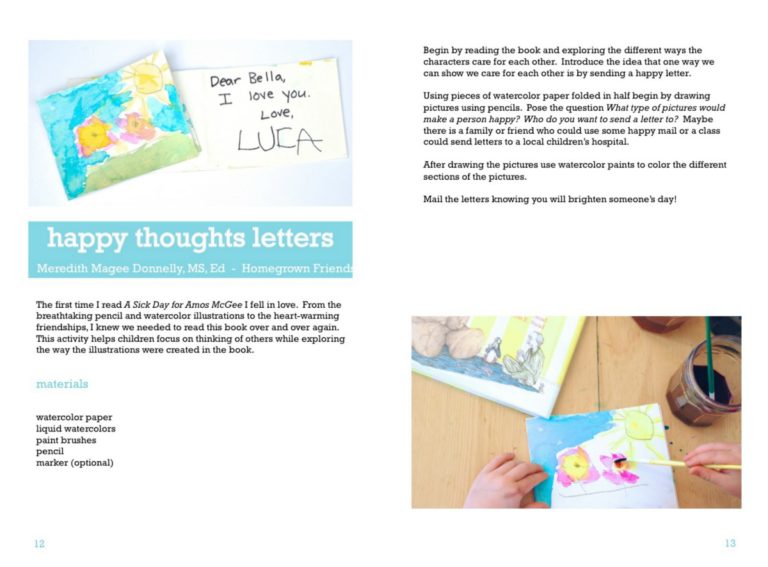Helping kids understand and regulate their emotions through arts and crafts is a fantastic way to promote self-regulation needs while fostering emotional intelligence and well-being. So, here are 12 self-regulation crafts designed to help kids express themselves artistically and navigate the colorful world of feelings. We know the power of targeting emotional regulation through tools like the Zones of Regulation and self regulation activities…crafts are another facet of those supports!

12 Self-Regulation Crafts for Kids
We’ve covered emotion crafts in the past, but that’s just the start. Once you’ve got a handle on understanding and naming emotions, moving to self-regulation craft ideas is next.
The self regulation crafts below are designed to be hands-on. We love to use social and emotional tools in a way that is fun and engaging. So, if you can incorporate skill-building into making crafts with kids, you are also adding in fine motor, gross motor, functional tasks, heavy work input, and so much more.
The self regulation crafts listed below work in a few different ways. Some of the craft ideas support sensory motor input by offering heavy work through the hands. You can add proprioceptive input by using tools like:
- fidget tools- Make your own DIY fidget toys for a craft version.
- bubble wrap crafts- pushing through the hands adds heavy work to the joints
- Using resistive tools in crafting- This might mean you select a squeeze glue bottle over a glue stick because squeezing the glue bottle adds more heavy work input, which is calming and organizing.
- Using resistive paper to tear or cut with scissors. This can add heavy work through the hands to calm and organize the body.
- Incorporate oral motor components. Some crafts require breath power! For example, our water xylophone craft requires blowing air through pursed lips to make music. This is a calming and organizing activity!
- Another idea that requires breath power is our pinwheel painting craft. This activity uses heavy work through pursed lips to spin paint. This painting activity can get messy (which is why we did this one outdoors!), but it’s a great oral motor craft that calms and regulates the sensory systems.
- Still another fan favorite is our egg boat craft. We used a straw to power the boats and blowing through the straw really adds regulating input.
You can see how taking a craft that covers emotions can add organizing and regulating sensory motor input just by the way you use one craft material over another. And, you can actually create a craft that is a self regulation tool in and of itself, for example making a feelings journal or a sensory bottle.
Let’s explore some of these craft ideas…
1. Emoji Faces Collage
This craft allows kids to visually explore and express a range of emotions. By associating facial expressions with specific emotions, children develop a deeper understanding of non-verbal cues.
Plus, the benefit of a hands-on activity using materials that kids cut out with scissors and glue onto a collage enhances fine motor skills and creativity. You could use old magazines or junk mail to encourage flipping pages and cutting a variety of paper types. This is great fine motor work for kids offered in a way that doesn’t look like “work”. It’s more fun than anything!
How to Make an Emojis Face Collage:
- Gather magazines or printouts that show various facial expressions.
- Provide the kids scissors, glue, and a large sheet of paper.
- Instruct the kids to cut out different eyes, mouths, and other facial features from the magazines.
- Discuss each emotion represented – happy, sad, angry, surprised, etc.
- Have the children arrange and glue these features onto the paper, creating their own emoji face collage.
2. Feelings Thermometer
Another fun self-regulation craft is a feelings thermometer. The feelings thermometer is a simple yet effective craft to encourage open communication about feelings.
The visual representation helps kids connect feelings to a scale, and regularly updating the thermometer encourages children to recognize and regulate their emotions in real-time.
How to Make a Feelings Thermometer:
- Draw a thermometer shape on a large sheet of paper or poster board.
- Label different levels of the thermometer with emotions (e.g., happy, calm, frustrated, angry).
- Provide stickers or markers for kids to mark how they’re feeling on the thermometer.
- Encourage them to adjust the marker based on their emotions throughout the day.
You could also quickly draw a thermometer on a chalkboard or dry erase board and ask the student to “check in” with their feelings by marking how they feel using dry erase markers or chalk. We covered a variation of this activity in our feelings check in activity. To incorporate the Zones of Regulation, you could use the colors of the program.
3. Calm Down Glitter Jars
A sensory jar, or a calm down glitter jar is a great self regulation tool for calming emotions or feelings. These jars can act as portable tools for kids to use when they need a moment to relax. One idea, our friendship sensory bottle, is a great way to create a self regulation craft, but also talk about friendship and differences, which is so important when it comes to regulating emotions and feelings.
They encourage deep breathing and mindfulness as children focus on the glitter slowly settling. Watching the settling glitter also provides a tangible visual metaphor for emotions calming down.
How to Make Calm Down Glitter Jars:
- Fill clear jars with water, leaving some space at the top.
- Add glitter in different colors (representing different emotions).
- Seal the jar tightly.
- Shake the jar vigorously to create a swirling effect with the glitter.
- Discuss how the glitter represents a busy mind or heightened emotions.
4. Traffic Light Feelings
Similar to the feeling thermometer, the traffic light metaphor simplifies the concept of emotional intensity for kids. It provides a visual cue for recognizing and categorizing emotions. Using a traffic light to explore feelings is nice because you can adjust this emotions craft to meet any need and you can use a variety of materials.
How to Make a Traffic Light Feelings Craft:
- Draw or print a traffic light template with three circles (red, yellow, green).
- Label each circle with a different emotion (e.g., red for anger, yellow for frustration, green for calm).
- Provide colored markers or crayons.
- Instruct the kids to fill in each circle with the corresponding color and draw facial expressions to represent the emotions.
The traffic light feelings craft idea is a nice one to use on an occupational therapy door or bulletin board in a school environment!
5. Feelings Journal
While a feelings journal isn’t traditionally a craft activity, you can definitely make this self regulation tool your own and add some crafting opportunities. Journaling encourages self-reflection and the expression of emotions through writing or drawing. Over time, kids can observe recurring patterns in their feelings and develop an overall deeper understanding of themselves.
Additionally, discussing their entries can facilitate open conversations about emotions between you and the child.
How to Make a Feelings Journal:
- Provide blank notebooks or sheets of paper.
- Encourage kids to decorate the cover of their feelings journal with colors and drawings that represent different emotions.
- Each day, ask them to draw or write about how they felt and why.
- Discuss the entries regularly to promote communication about emotions.
- Incorporate art or creativity by adding doodle prompts, adding stickers, or coloring in the margins and blank spaces of the journal.
6. Worry Dolls
Worry dolls provide a tangible representation for abstract emotions or concerns.
Sharing worries with the dolls externalizes the burden and helps kids feel a sense of relief. The act of creating and interacting with the dolls also promotes a sense of control over emotions.
How to Make a Worry Doll:
- Provide a wooden craft stick, markers, pipe cleaners, and tape or glue.
- Wrap the pipe cleaners around the craft stick and bend them into arms and legs. Use a small piece of tape or a dot of glue to hold the craft sticks in place.
- Add facial features to one end of the craft stick.
- Decorate the dolls with colorful yarn, markers, or fabric.
- Designate each worry doll as a guardian of specific worries or emotions.
- Encourage kids to share their worries with the dolls before bedtime.
7. Mood Meter Painting
The mood meter painting helps kids visually connect colors with specific emotions.
It prompts self-reflection as children consider and express their current emotional state. It also fosters a deeper understanding of the fluid nature of emotions.
How to Make a Mood Meter Painting:
- Draw a large mood meter on a poster or canvas, dividing it into four quadrants labeled “Happy,” “Calm,” “Worried,” and “Angry.” You could also use a paper plate that is divided into four sections.
- Provide various colors of paint corresponding to each mood.
- Encourage the kids to paint their current mood on the meter, using colors that resonate with how they feel.
8. Rainbow of Emotions
This craft also introduces the concept of emotions as a spectrum, while connecting colors with specific emotions.
The visual representation of emotions as a rainbow is a positive and inclusive approach to recognizing and managing feelings.
How to Make a Feelings Rainbow:
- Create a rainbow template with different emotions assigned to each color (e.g., red for anger, blue for calm, yellow for happiness). Our free rainbow template is one option.
- Provide the kids with colored paper, markers, and glue.
- Ask children to cut out cloud shapes and write or draw things that make them feel each emotion, then glue them onto the corresponding color.
You can use our deep breathing rainbow along with this activity.
9. Emotion Charades Drawings
This game of charades encourages expression without needing verbal communication. Kids can get involved with making this activity by drawing pictures or facial expressions on the cards to match the feelings and emotions words.
It promotes understanding of non-verbal cues associated with different emotions and enhances empathy development as the kids consider how others interpret and respond to their drawings.
How to Make Emotion Charades Drawings:
- Write different emotions on the cards (happy, sad, surprised, etc.).
- Ask kids to pick a card and draw a simple representation of that emotion without using words.
- Other kids can also guess the emotion based on the drawing.
10. Coping Strategy Cards:
Creating coping strategy cards provides tangible tools for children to use when faced with challenging emotions. Whenever a kid feels overwhelmed, they can pick a card and practice the coping strategy written on it. These can be coping mechanisms that support sensory and emotional needs.
These cards can help encourage proactive thinking about how to manage and regulate emotions. The nice thing is that this craft can be taylored to the individual’s interests and needs.
How to Make Coping Strategy Cards:
- Create cards or small rectangles from sturdy paper. Use a set of old cards and decorate them with permanent markers or stickers. You can even tape a piece of paper over the face of the cards. Another idea is to tape paper over the cards and then laminate them for durability.
- Write or draw different coping strategies on each card (e.g., deep breathing, drawing, taking a break).
- Decorate the cards with colors or illustrations.
- Discuss and explain each coping strategy with the children.
11. Paper Plate Emotion Masks
Paper plate emotion Masks allow kids to visually express and embody different emotions. Wearing or holding the masks provides a tangible way for them to explore and share their feelings with others.
How to Make Paper Plate Emotion Masks:
- Cut paper plates in half to create masks.
- Have children draw or paint facial expressions on the masks to represent different emotions.
- Attach craft sticks or elastic strings to turn the masks into handheld or wearable creations.
- Once completed, discuss the emotions depicted on their masks.
12. Mood Rocks
Mood rocks serve as tangible pocket-sized tools for recognizing and expressing emotions. Kids can carry these rocks and use them as prompts to discuss or reflect on their current mood which fosters self-awareness.
The process of collecting and decorating rocks also provides a calming activity.
How to Make Mood Rocks:
- Collect smooth stones or rocks (or ask the kids to collect them).
- Instruct kids to decorate each rock with colors and symbols representing different emotions. (make sure to apply a sealant to protect the artwork).
- Discuss each emotion as they work on the rocks.
- Encourage kids to keep their mood rocks in a designated space.
Self-Regulation Crafts in Occupational Therapy
Occupational therapy practitioners love using crafts as a tool to support skill building…its’ in the very roots of our profession! So when it comes to supporting the cognitive and emotional aspect of functional skill development, crafting is a go-to OT activity!
And, for therapy providers that are working with students or clients in small groups, the craft ideas we shared in this blog post make great therapy ideas for self-regulation group activities.
These self-regulation crafts not only nurture creativity but also serve as valuable tools for emotional intelligence.
Through the use of colors, expressions, and discussions, kids can gain a deeper understanding of their own emotions and develop empathy for others, laying the foundation for healthy emotional well-being.
Want a few more craft ideas for self regulation, emotions, and social and emotional development? Check out our e-book, Exploring Books Through Play. The e-book walks you through using popular children’s books to create crafts and hands-on activities based on social emotional areas like empathy, feelings, friendship, and emotions. It’s a wonderful resource to add to your therapy toolbox!

Exploring Books Through Play has 50 crafts and activities for children.

For more information on this digital resource, check out the full description on Exploring Books Through Play.

Colleen Beck, OTR/L has been an occupational therapist since 2000, working in school-based, hand therapy, outpatient peds, EI, and SNF. Colleen created The OT Toolbox to inspire therapists, teachers, and parents with easy and fun tools to help children thrive. Read her story about going from an OT making $3/hour (after paying for kids’ childcare) to a full-time OT resource creator for millions of readers. Want to collaborate? Send an email to contact@theottoolbox.com.






